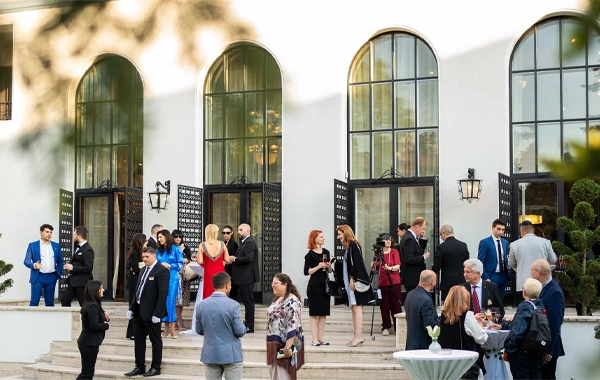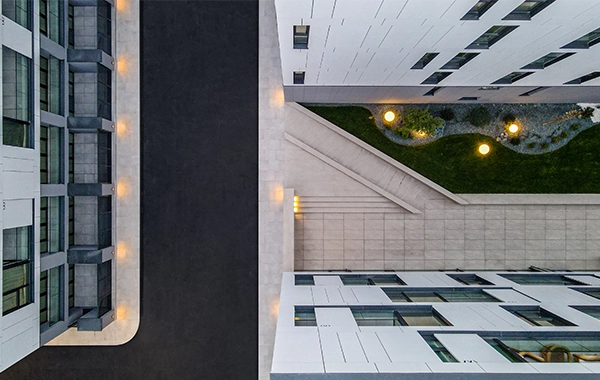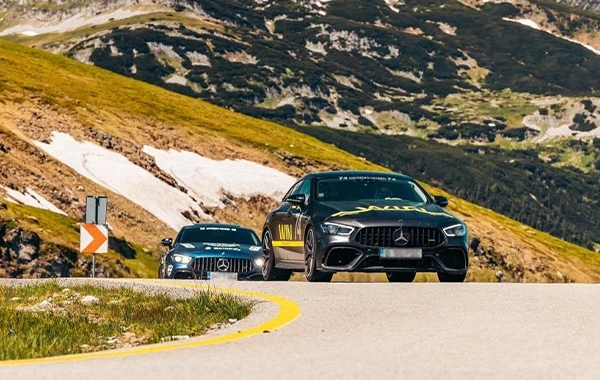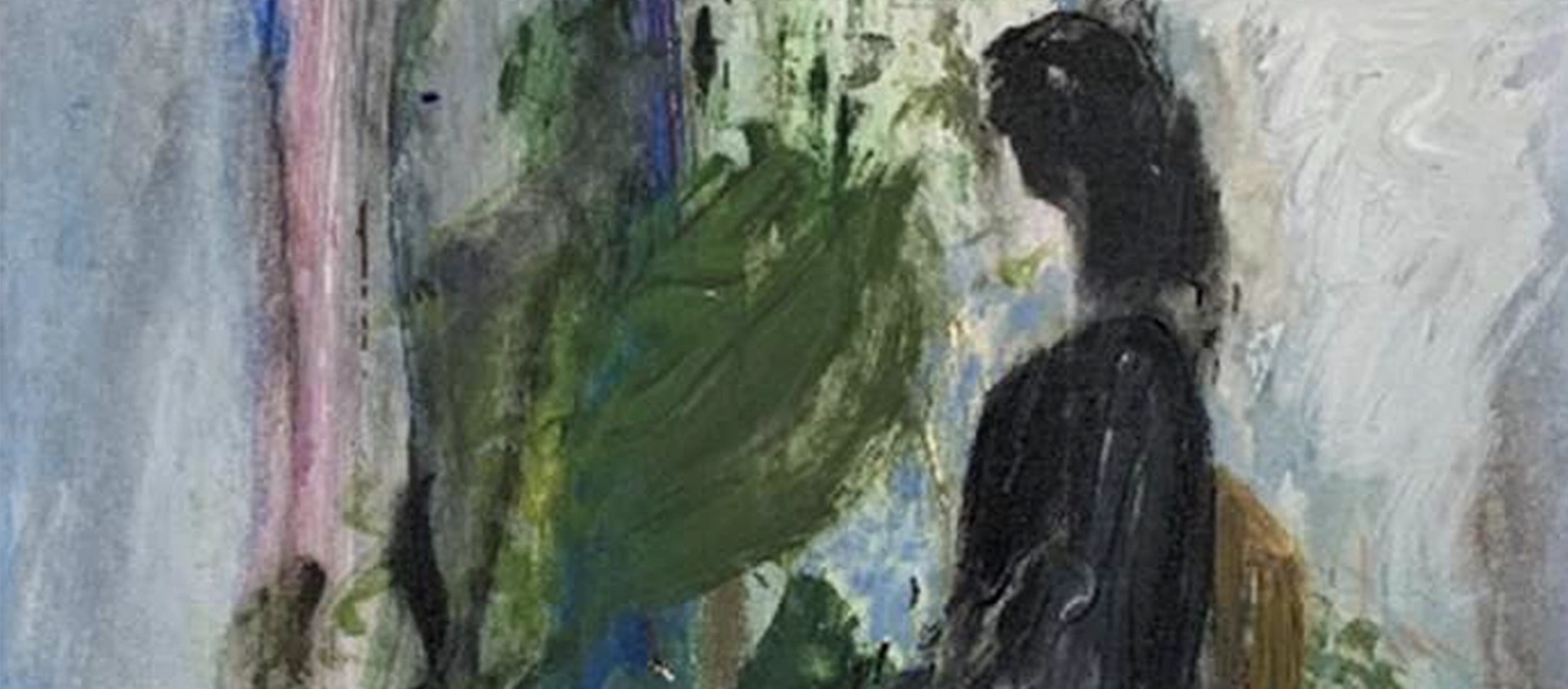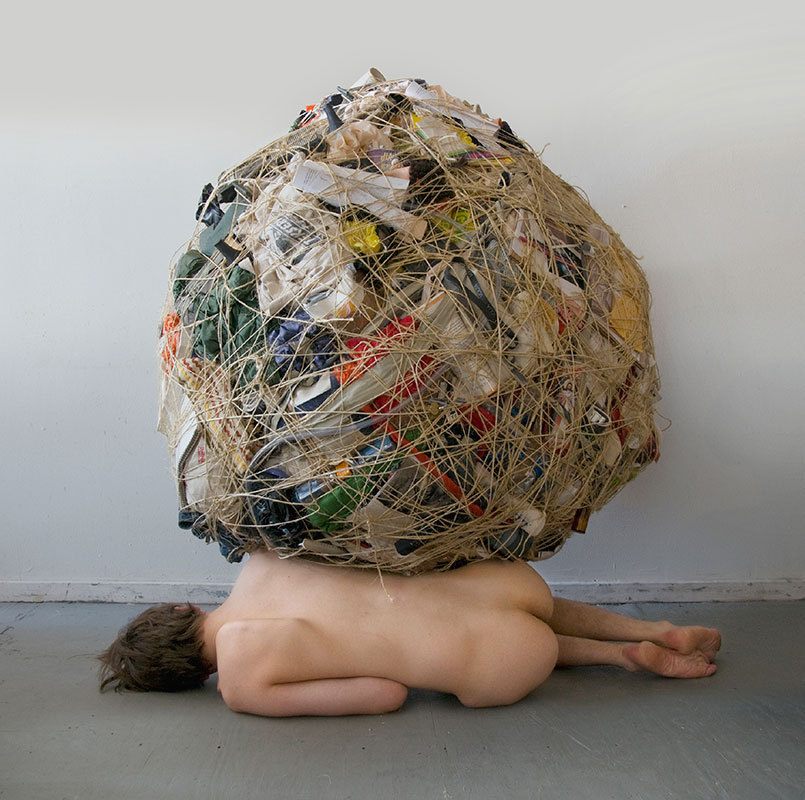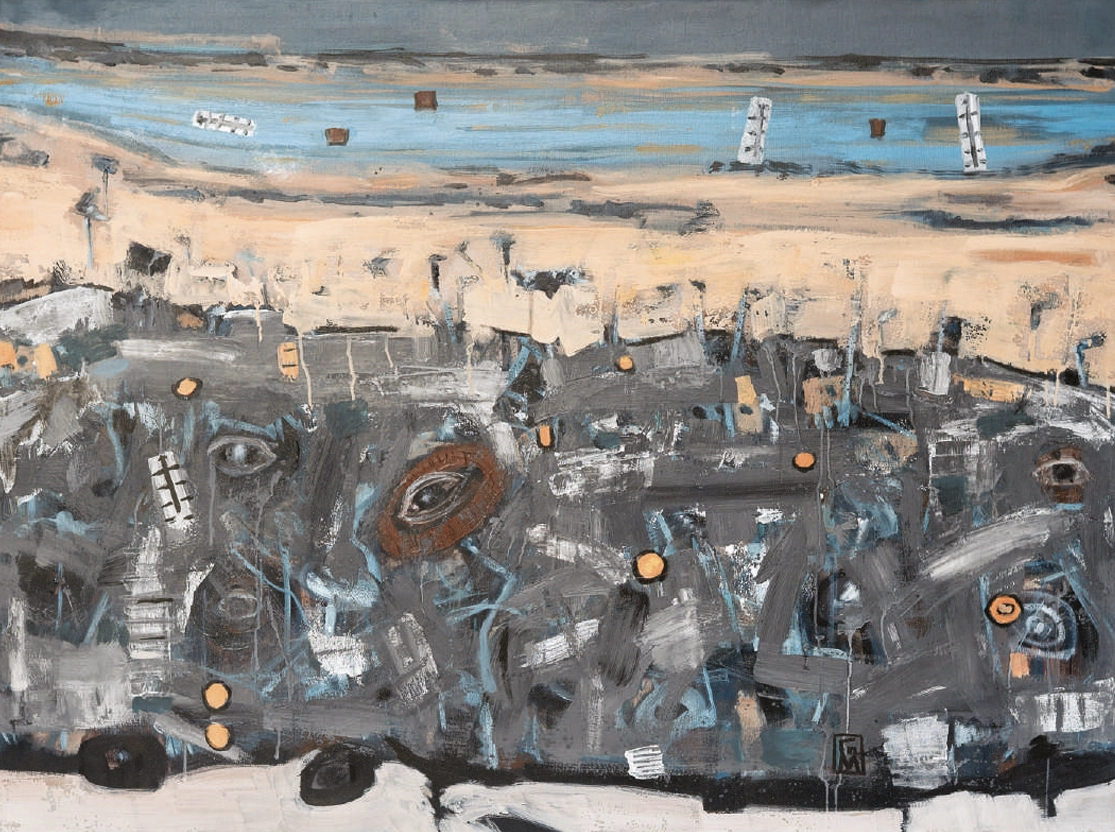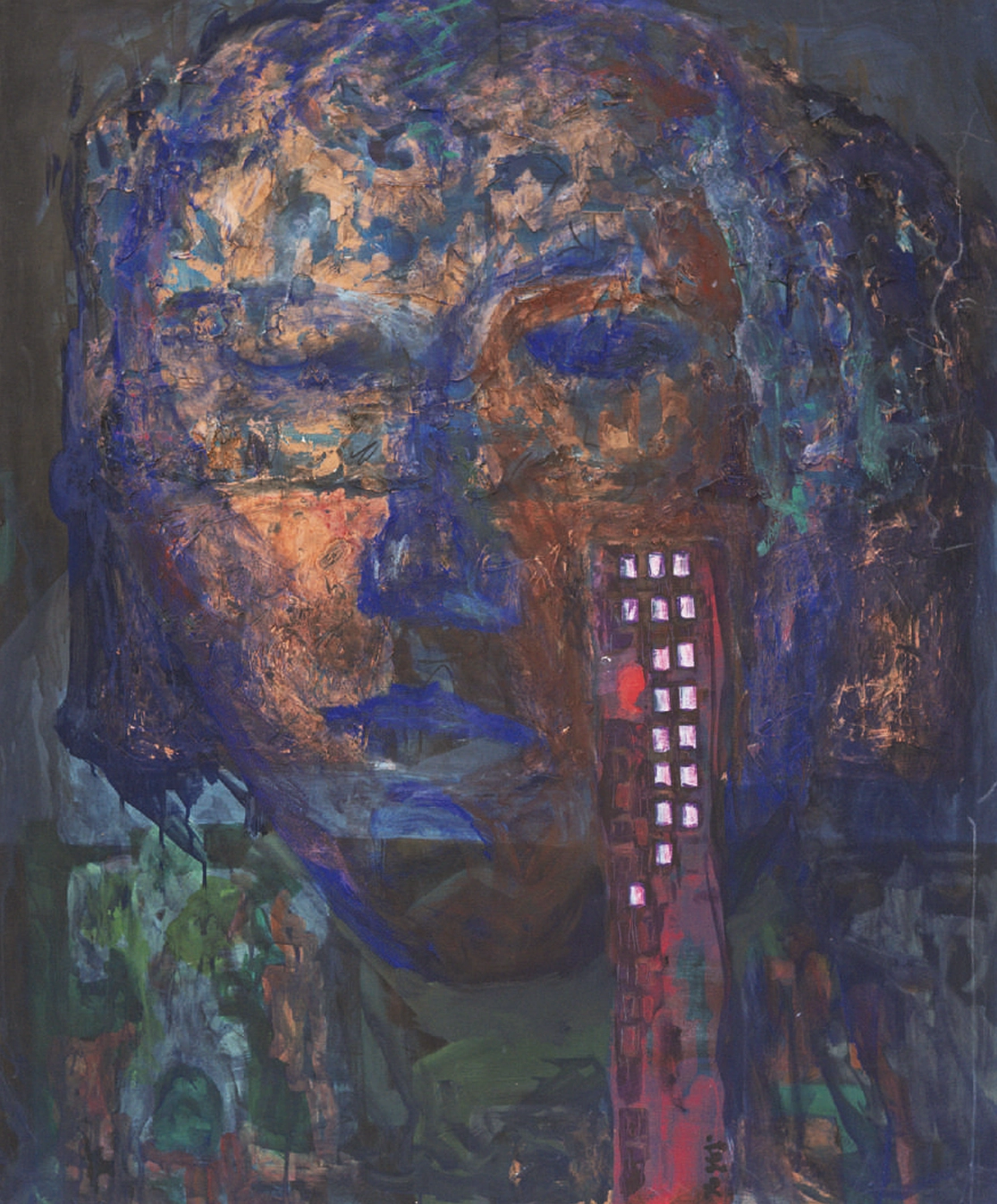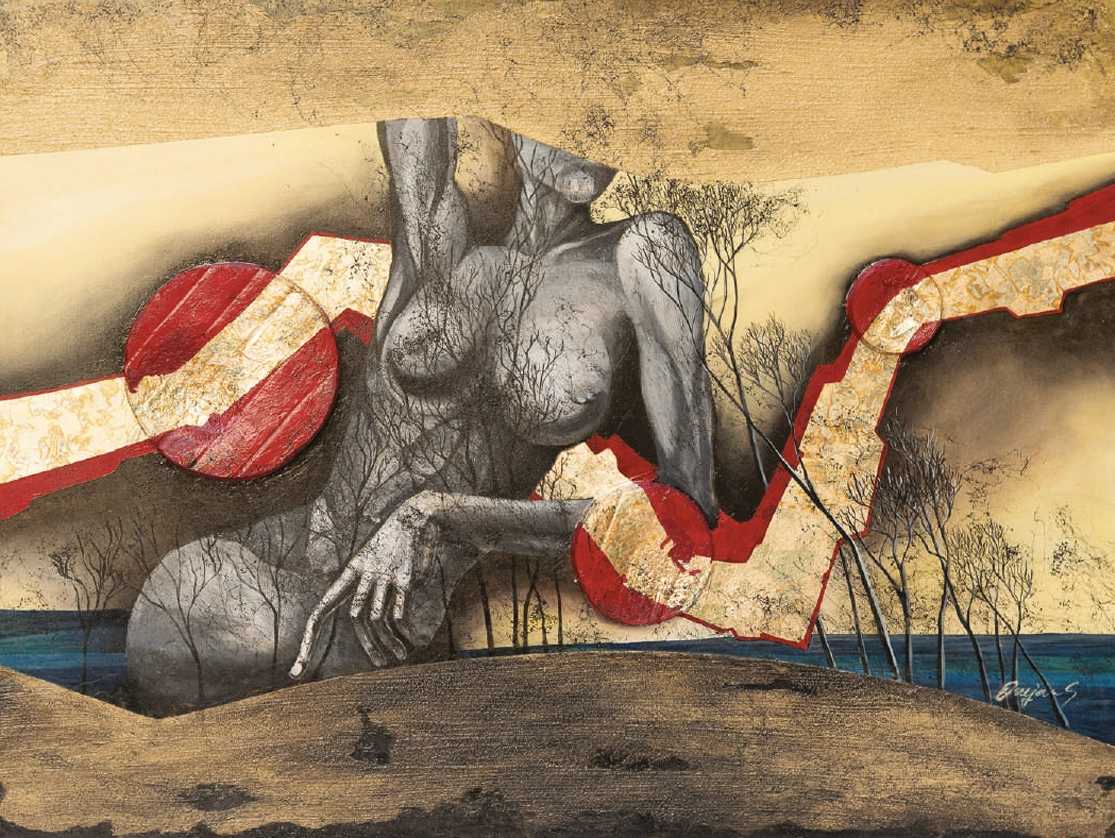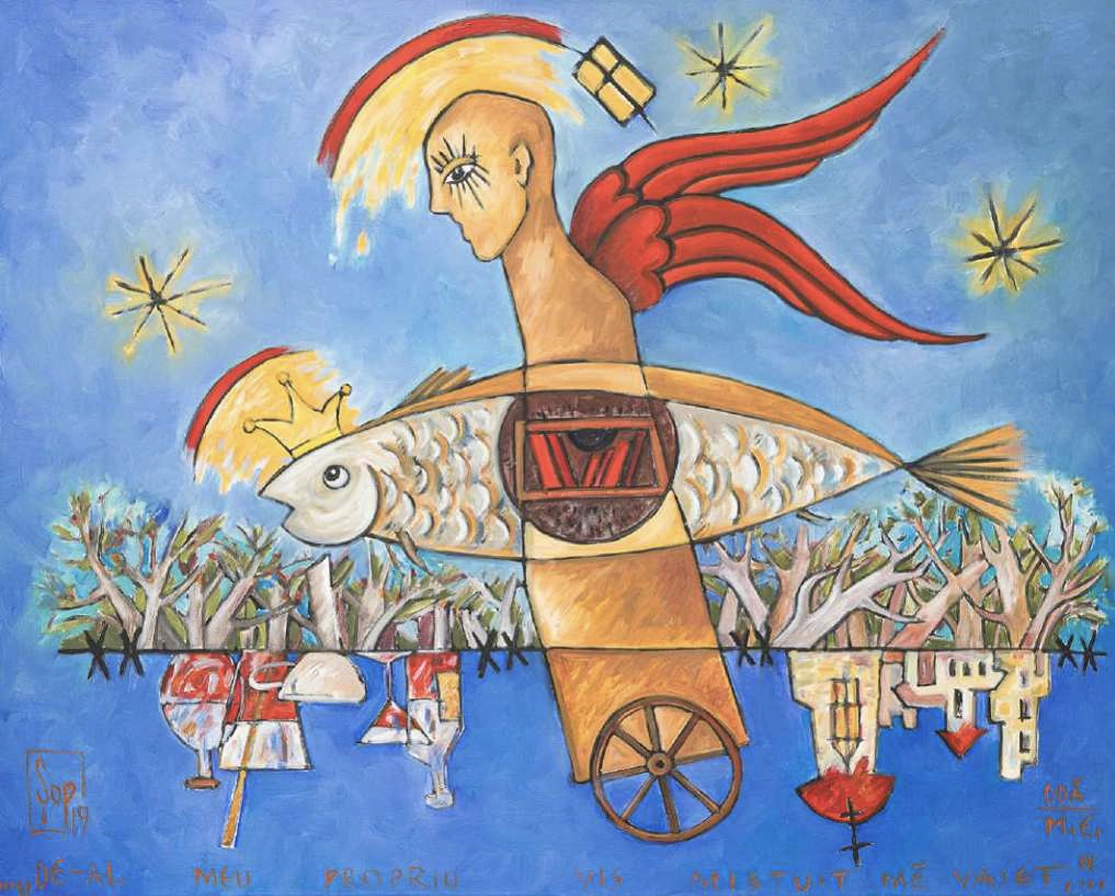The body as an echo of collapse
Another representation of eco-anxiety is achieved through the alteration of compositions depicting the human body. This is not about the cyborg domain theorized by Donna Haraway, but rather about bodies that already bear the marks of climate change—marks in the form of results or, more precisely, consequences of the irrational use of Earth’s resources. Even in works that do not explicitly address such themes, such as the nude Out of This World by Sofia Ovejeanu, there is a dystopian reading key, considering elements such as the distorted perspective, the positioning of the female body in relation to a red, demarcating line, and the collage background composed of overlapping layers that seem to render a desolate landscape. This vulnerable, nude, fragile and yet defiant exposure in relation to the red line reveals another tension, namely the one between liberation and imprisonment.
A famous and hotly debated sculpture is The Young Family by Patricia Piccinini, which depicts in hyperrealist fashion mutant, transgenic, grotesque bodies that, by brushing against the abject, manage to materialize precisely these analyzed eco-anxieties. Patricia Piccinini continues to hybridize species, all retaining human elements in their appearance—something that creates contradictory feelings, ranging from alienation to belonging. And yet, in her works, there is a surprisingly explicit component that neutralizes the initial reaction of repulsion almost as quickly: affection. The hyperrealistic creations possess strong attributes of affection, of a complete innocence, this aura being a final (or perhaps initial?) trace of humanity, a recognizable imprint of it.
Stepping outside of this framework, a work from the WIN Gallery that also acts as a commentary on the relationship between contemporary man and urbanity is Man in the Urban by Ileana Ștefănescu. With an oversized face and using clay directly on the canvas surface, Ileana Ștefănescu discusses through composition and materiality aspects related to man’s relationship with the city, with urbanity. An echo of urban collapse, of its unbounded development, the body—in this case, the face—feels the need to grow, to expand, to reclaim its dominant position over the urban space which, ironically, it itself created. Ileana Ștefănescu recalibrates the man–city dynamic through this positioning reminiscent of a David and Goliath.

